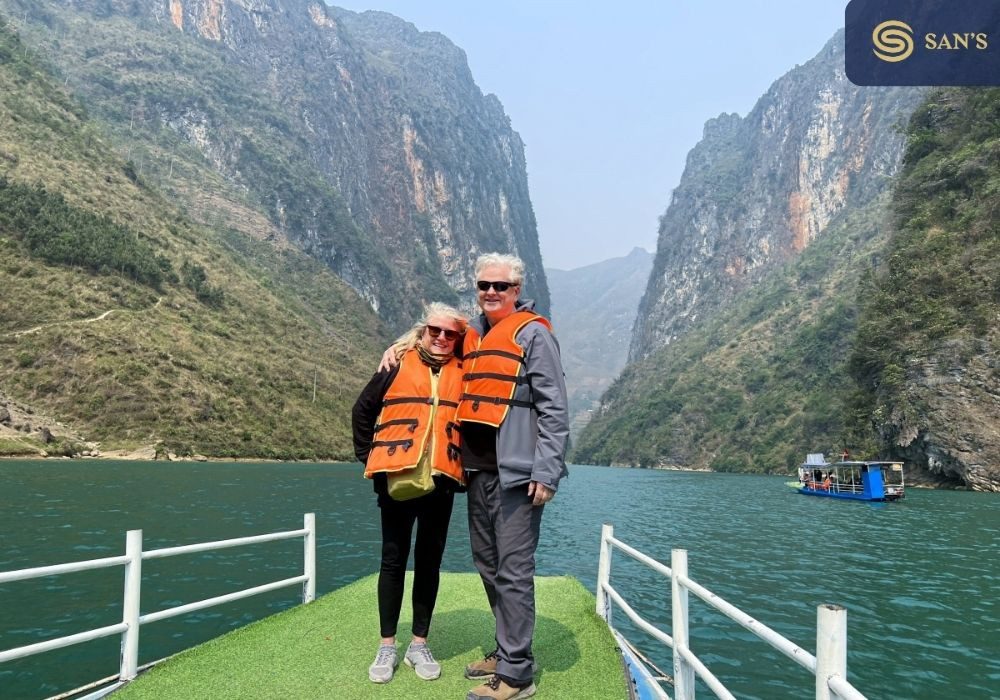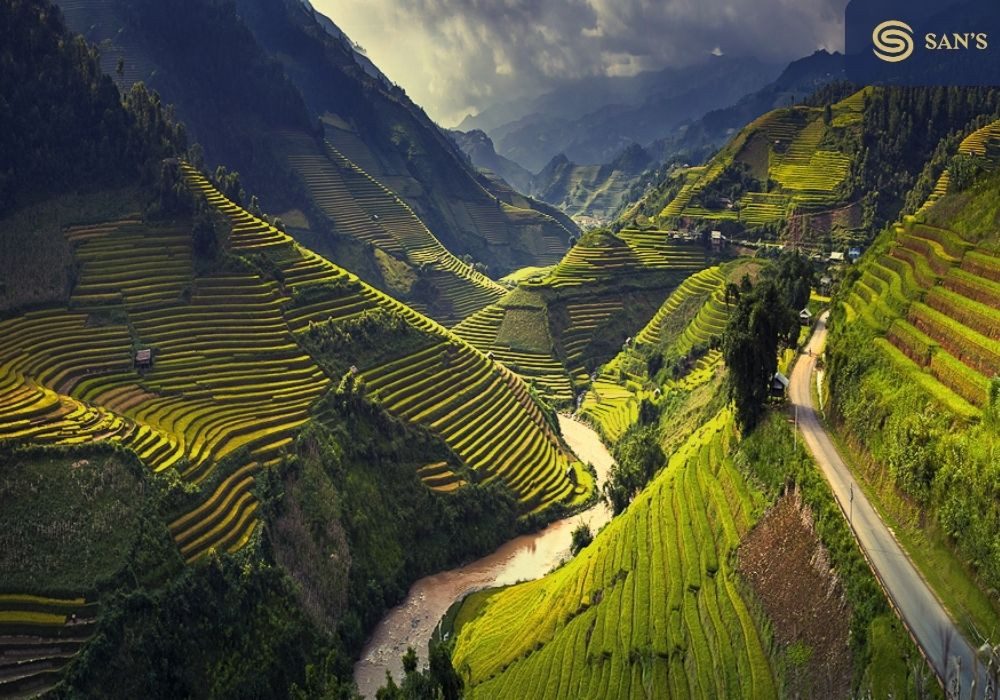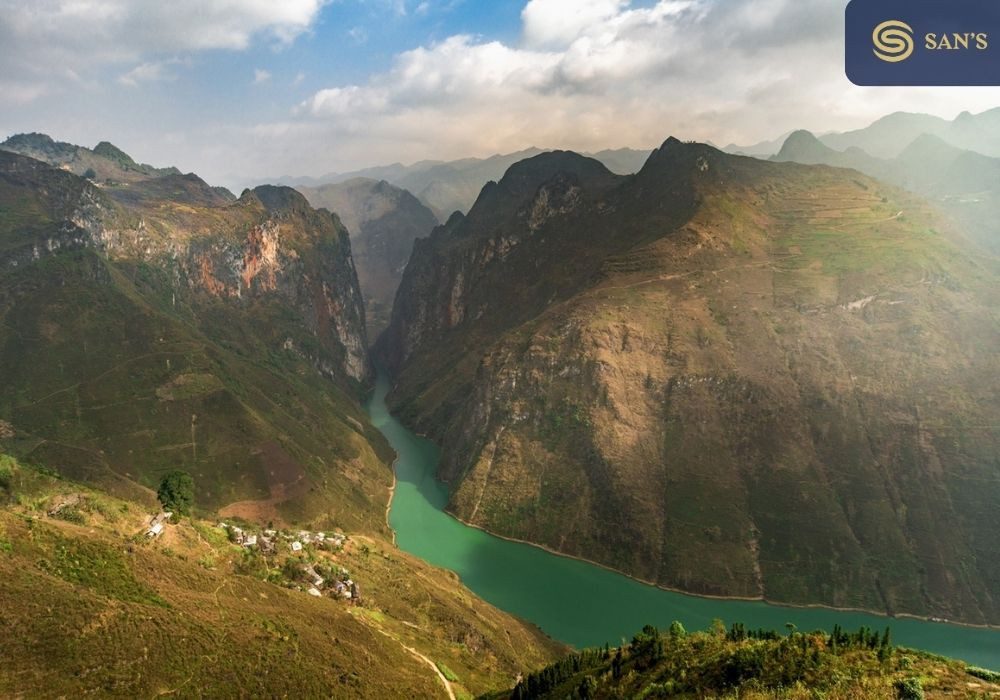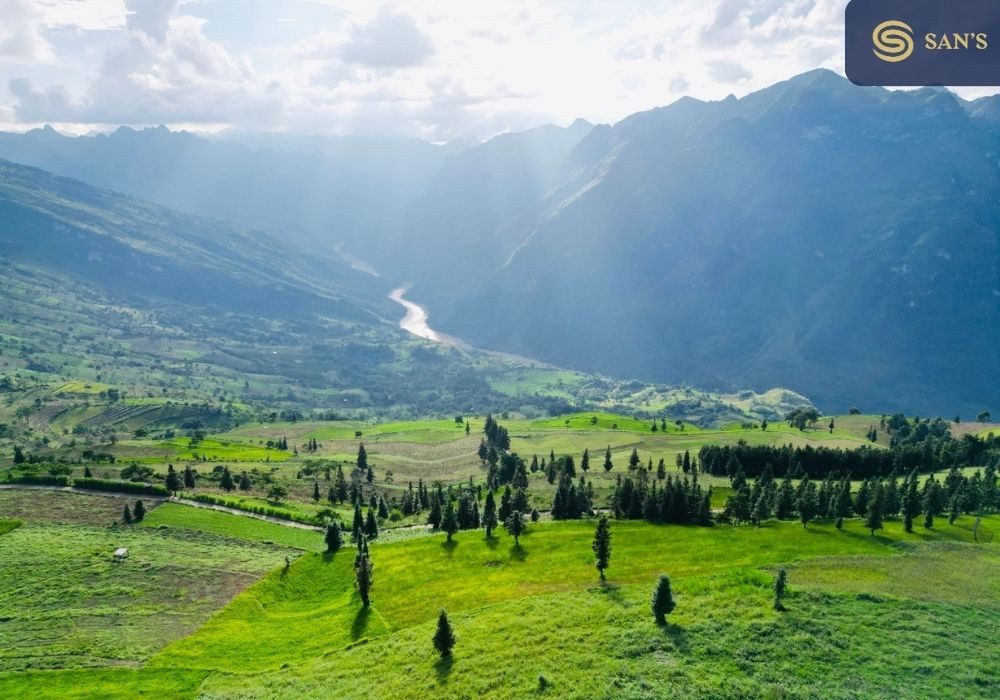Ha Giang is on Vietnam’s most northerly regions with a unique geographical makeup and diverse range of cultures. The mountainous area with towering limestone peaks, share a 270 km border with neighbouring China and plays host to the border crossing at Thanh Thuy. This remote and stunningly beautiful area is one of the last areas of Vietnam that requires tourists to obtain a visa in order to visit, but not to worry it is relatively cheap and easy to purchase one.

Although gaining popularity with tourists, this remarkable area is still off the beaten track and goes unnoticed by many. Those that do make it to what is known as the “Final Frontier of Vietnam” are rewarded by sweeping views of karst mountains, carpets of flowers, colourful markets and rich, diverse ethnic minority communities.
Ha Giang is a breathtaking province located in the northernmost region of Vietnam. Known for its dramatic landscapes, rich cultural heritage, and ethnic diversity, Ha Giang offers a unique and immersive experience for travelers. Here’s an overview of Ha Giang:
Geography and Scenic Beauty: Ha Giang is characterized by its rugged mountains, deep valleys, and winding roads that offer stunning panoramic views. The province is home to Dong Van Karst Plateau, a UNESCO Global Geopark, which showcases impressive limestone formations, picturesque valleys, and unique biodiversity. The iconic Ma Pi Leng Pass is a highlight, offering awe-inspiring views of the Nho Que River.

Ethnic Minority Communities: Ha Giang is home to several ethnic minority groups, including the Hmong, Dao, Tay, and Lo Lo, each with its own distinct traditions, costumes, and languages. Visiting local villages provides an opportunity to learn about their way of life, witness traditional practices, and interact with friendly locals.
Dong Van Ancient Town: Dong Van is a charming town within Ha Giang that has preserved its traditional architecture and cultural heritage. The town’s narrow streets are lined with old houses made of clay and stone. It’s an excellent place to explore the local market, taste regional cuisine, and learn about the local history.

Lung Cu Flag Tower: Situated on the summit of Lung Cu Peak, the Lung Cu Flag Tower is a symbol of Ha Giang’s sovereignty and marks the northernmost point of Vietnam. Visitors can climb the tower to enjoy panoramic views of the surrounding landscapes, including the border between Vietnam and China.
Local Markets: Ha Giang is famous for its vibrant and bustling markets, where people from different ethnic groups come to trade and sell their products. The markets are colorful and lively, offering a wide range of local goods, handicrafts, and traditional costumes. The Dong Van Market and Meo Vac Market are particularly popular and provide a great opportunity to experience the local culture.
Trekking and Outdoor Adventures: Ha Giang is a paradise for outdoor enthusiasts. The province offers numerous trekking routes through its mountainous terrain, allowing visitors to explore remote villages, terraced rice fields, and hidden waterfalls. You can also enjoy activities such as motorbike tours, rock climbing, and camping in the stunning natural surroundings.

Food: Ha Giang has a distinct cuisine that reflects its geographical location and cultural diversity. Local specialties include thang co (a traditional stew made from horse meat), grilled or smoked meats, buckwheat pancakes, and corn wine. Exploring the local food scene is a delightful way to immerse yourself in the local culture.
Ha Giang is a destination that showcases the raw and untouched beauty of Vietnam’s northern region. Its awe-inspiring landscapes, diverse cultures, and warm hospitality of the local communities make it an unforgettable experience for travelers seeking adventure, cultural exploration, and natural beauty.
>>See more: Sapa
